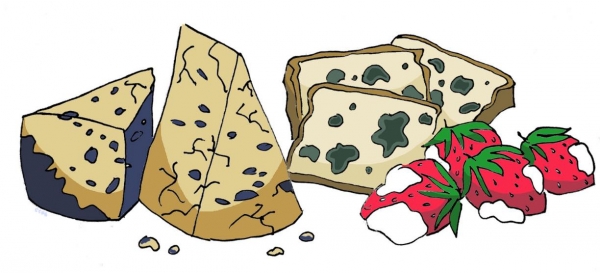Locally-brewed kombucha is all the rage in Montreal; a new brand seems to line the shelves of hipster cafés every week. Kombucha, along with blue cheese, aged meats, and alcohol, are just a fraction of the foods dependent on fermentation. Fermentation occurs when microorganisms break down glucose to make energy without the presence of oxygen. The process produces a number of by-products that change the flavour and consistency of food.
‘Probiotic’ is the umbrella term used to refer to beneficial bacteria that contributes to gut health. According to Lawrence Goodridge, director of the Food Safety and Quality Program, lactic acid bacteria are responsible for the probiotic benefits of substances such as yogurt.
“Lactic acid bacteria […] are useful because they produce a lot of compounds that make our gastrointestinal tract healthy,” Goodridge said.
While these microorganisms are essential for creating certain delicious products, there also exists a variety of miniscule life forms that infiltrate the body through food to wreak havoc. Goodridge explained that these microorganisms are the major culprits for food poisoning. Parasites, like cryptosporidium, cause miserable living conditions for the host. Viruses like norovirus can be so prolific that they actually force cruise ships back to shore. Bacterial infections such as E.coli and salmonella are also responsible for a significant proportion of foodborne illnesses. They are often found in the intestinal tract of animals and can contaminate any produce that comes in contact with animal excrement.
“It’s a common myth that [salmonella] can only be found in chicken and eggs,” Goodridge said. “Certainly, it is found in chicken and eggs a lot, but salmonella can cause outbreaks in virtually every food. There have been outbreaks in chocolate.”’
Recently, the Government of Canada issued a warning against washing poultry prior to cooking it because the splashing water may spread salmonella onto other surfaces. Even more pressingly, on Nov. 26, the Center for Disease Control released a food safety alert linked to E.coli-contaminated romaine lettuce grown on the central coast of California, which produces 75 per cent of the U.S.’s leafy greens. The same strain of E.coli has also been found in romaine lettuce grown in Ontario and Quebec.
When left unchecked, these pathogenic microorganisms can grow inside of people and make them sick for varying periods of time. However, low levels of heat are usually sufficient in killing the more common bacteria, which is why it is so critical to fully cook food before eating it. This is especially true when visiting new places; new bacteria can be dangerous when one is exposed for the first time without prior immunity.
Exotic microbes aside, the majority of people encounter the byproducts of bacterial metabolism in the form of food that has been left in the fridge for too long. Any change in colour or odour indicates that the pseudomonas bacteria has started to digest the food. While a healthy person will not necessarily become ill by eating spoiled food, bacteria will cause food to lose its nutritional value. In addition, its digestive by-products often make the food look and smell unappealing, which is usually reason enough to deter someone from eating it.
Despite their size, microorganisms have a huge impact on human beings, influencing everyday life to a degree most people are never aware of.
While it may seem logical that cutting off the mould on bread would leave the rest of the product salvageable, new research reveals that moulds release spores which burrow into the product. Once there are visible signs of growth, then, the entire loaf of bread is probably compromised. However, harder foods such as meats and cheeses with a little bit of mould can still be eaten so long as all the visible mould is removed, as the denser makeup of the food prevents mould from growing too far.








